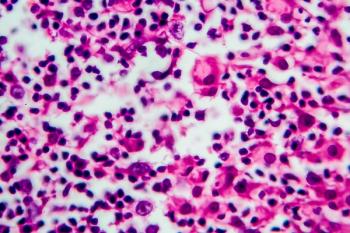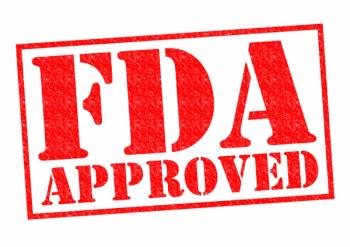
- January 2022
- Volume 28
- Issue 1
ASH 2021 Recap: Real-World Evidence
A presentation at the 63rd American Society of Hematology (ASH) annual meeting explored the collection of real-world data.
Collecting Real-World Data in Hematologic Malignancies, at Home and Abroad
Greater use of real-world data (RWD) in studying and treating hematologic malignancies promises to speed up the delivery of new therapies and create more tailored regimens for groups who have not been well represented in clinical trials, including Black patients who have multiple myeloma.
That’s the mission of 2 research initiatives that seek to collect and curate data in blood cancers and disorders, according to a group of experts who gathered for a symposium, “The Role of Real-World Data Collection in Hematologic Malignancies,” during the 2021 American Society of Hematology (ASH) Meeting & Exposition, held in Atlanta, Georgia, and online.1
ASH president Martin S. Tallman, MD, of Memorial Sloan-Kettering Cancer Center in New York, convened the wide-ranging panel of both US and European speakers, who discussed efforts by the ASH Research Collaborative and its counterpart in Europe, the HARMONY Alliance.
Tallman opened with an overview of where RWD come from and who collects them. “RWD sources in the United States typically include electronic health records, insurance claims, patient registries, and digital health solutions such as mobile applications and devices,” he said.
The ASH collaborative and HARMONY Alliance, said Tallman, “are positioned to make major impact” in using these data sources in both research and regulated settings. He then introduced John Gribben, MD, DSc, of Barts Cancer Institute and the London School of Medicine, a past president of the European Hematology Association, who began his talk by explaining HARMONY’s structure and funding. HARMONY now has more than 97,000 patient records, including those in acute myeloid leukemia (AML), chronic lymphocytic leukemia (CML), multiple myeloma, and myelodysplastic syndromes. An additional program, HARMONY Plus, covers data from chronic myeloid leukemia and Hodgkin lymphoma. Gribben made clear that data for some diseases are more complete than for others, but collecting more and better data is part of the work that’s ahead.
“Clearly, the aim of the project is to speed up the development of more effective treatment, predictions of blood cancers, and the use of big data to develop more personalized treatment for blood cancer patients,” Gribben said. “So, building the big data platform has allowed for a better understanding of these diseases. Obviously, everyone in this room understands the need for and importance of looking at RWD sets in terms of being more representative of our patients.”
William A. Wood, MD, MPH, a bone marrow transplant specialist at the University of North Carolina at Chapel Hill, who serves as chair of the ASH Research Collaborative data hub oversight group, discussed expectations, challenges, and solutions to accelerate research. For starters, he said, “The goal of aggregating completed RCT [randomized clinical trial] data is different than the goal of aggregating consensus RWD.”
Unlike traditional RCT data, RWD are likely being collected for some other use. “Some concepts overlap, yet some are different,” Wood said. “We can use RWD, for example, in a continuous fashion to facilitate ongoing clinical practice improvement and indeed, our dual goals.”
Wood explained the challenges of bringing together disparate data sources and using natural language processing to make the different data sets work together. It takes working with many stakeholders to achieve both the stakeholders’ goals along with 2 primary research purposes, which are: (1) to accelerate research with different methods and analytical approaches, and (2) to “improve clinical practice done locally at the site level, and also across sites in a collaborative way, something that is unprecedented at this scale in hematology,” said Wood.
Wood was the lead author of a paper by the ASH Research Collaborative that was published during the meeting; it discusses the start of a dedicated website on multiple myeloma.2 Said Wood, “It is launching, and it is here.”
Guillermo Sanz, MD, PhD, of Valencia, Spain, the HARMONY Alliance cochair, sought to explain where HARMONY ranks in terms of key research items in the European agenda. “It would be considered the start project of the Big Data for Better Outcomes program of the Innovative Medicines Initiative,” he said, referring to the effort to link major databases across the continent to find cures and treatments for Alzheimer disease, other cancers, and cardiovascular disease.3 Public and private entities have equal voices in HARMONY’s governance, he said.
In the United States, the FDA has advanced the cause of real-world evidence in several ways, notably through a 2018 guidance directed by the 21st Century Cures Act, said hematologist Nicole J. Gormley, MD, who is the FDA’s division director for histological indices.
Gormley outlined some concepts to be weighed when using RWD:
- Do the data represent what they are intended to represent?
- Do the data contain relevant information on exposure covariates and outcomes of interest for the study hypothesis?
She noted that while the FDA “does not endorse one data source over another,” some may have limits, depending on the study question. An electronic health record (EHR), for example, was created to assist with clinical care. “The data are limited to information captured in the EHR within a particular system and may not represent the entire clinical picture,” Gormley said. Other confounders may need to be considered.
Factors such as trial design and population selection matter—but nothing matters more than drug sponsors engaging with the FDA upfront before they make plans to use RWD in a submission.
Jan Geissler, chair of LeukaNET and cofounder of CML Advocates, in Riemerling, Germany, spoke from the perspective of what patients can gain from the use of RWD. To begin, Geissler said, this shift could better capture who actually lives with certain blood cancers. “If you look at CML data, [the patients in] most of the studies have an average age of 46 [or] 47 years, but the average [age of] incidence of CML is 65 years. So, limited external validity of that [exists] in a real-world patient population.”
But Geissler sees real potential in the use of RWD in understanding patient preferences, in explaining “the difficult tradeoffs that patients have, the actual patient experiences on therapies with all the symptoms, and what [having these diseases] means in real life.” Data captured remotely with mobile devices would offer a rich resource for researchers and drug developers, he said.
“We want to capture patient reality—what it means to get these therapies and diagnostics, and, [also], all the new innovations out there in the real world with [a variety of] populations: the elderly, migrant communities, and [other] people who we actually don’t have on the studies,” Geissler said. “I think we all agree that [clinical and regulatory decisions] need to be based on the data.”
Patients and the public do have concerns about how data are used, Geissler said. While patients have a personal stake in participating in trials and sharing data, the general public doesn’t. In the overall population, only about one-third of people support sharing medical data. “They’re concerned about data being shared with third parties,” he said.
Tallman then shifted the discussion to the clinical angle, starting with Kenneth C. Anderson, MD, of the Jerome Lipper Multiple Myeloma Center at the Dana-Farber Cancer Institute. Anderson addressed clinical applications of the ASH Research Collaborative and discussed its priorities:
- Aggregating data on minimal residual disease (MRD) in multiple myeloma to optimize patient care.
- Collecting data from Black patients, to improve their access to novel agents in multiple myeloma.
- Understanding the relationship between COVID-19 and multiple myeloma, so that the infection can be better managed in patients who have this blood cancer.
Anderson said that the great strides that have been made recently in multiple myeloma—more than a dozen new therapies, increased progression-free and overall survival—are all associated with MRD negativity. Now, he said, priority tasks are to inventory medical centers to know how often MRD is being used in clinical decision making, and to collect longitudinal MRD tests to develop meaningful long-term data. “We want to analyze the relationship of real-world MRD negativity with clinical outcomes, so that we can ultimately make informed use of MRD in multiple myeloma care,” he said.
Despite the advances in multiple myeloma, Black patients, compared with White patients, have not shared equally in the benefits. And it is known that monoclonal gammopathy of unknown significance—a precursor to myeloma—is more common in the Black population. RWD can help overcome current barriers to drug access and allow more Black patients to benefit, Anderson said. Finally, he pointed to results showing that myeloma patients don’t respond as well as others to COVID-19 vaccination, especially if they are receiving CD38- or BCMA-targeted treatments. Starting at 5 sites, “We will capture longitudinal myeloma data to create a new COVID module for diagnosis, treatment, vaccination, and outcome of COVID-19 infection. [Then we] will expand our effort to 10 to 15 sites. And we will, in fact, identify and address disparities that are present in this context as well.”
Mario Boccadoro, MD, of the hematology division at Cattedra Ematologia, Torino, Italy, discussed efforts to create a registry of RWD from medical centers across Italy. The aims, he said, are to describe: (1) the disease in clinical practices; (2) subgroups; (3) different sequences and time to events; and (4) “last, but not the least important, the patient-reported outcome.”
Early plans call for including 30 medical centers (beyond major academic centers) and 1900 patients. So far, 210 patients are enrolled.
The case for RWD collection in AML came from Laura C. Michaelis, MD, of the Medical College of Wisconsin in Milwaukee. Using RWD, she emphasized, will benefit patients and community providers by:
- “helping us accelerate trials for rare variants of an already rare disease”;
- “illuminating valid contemporary outcomes” and possibly answer questions “that may not be appropriate for RCTs”; and
- “showing us where bias exists in the clinical trials that we already have out there and help us develop a more equitable system of delivering care.”
The challenge of rare variants is especially problematic in AML. This disease, Michaelis said, has only 14,000 US diagnoses a year, with both prognosis and outcome dependent on molecular mutations. One study that needed 700 patients for a rare variant took 4 years to complete enrollment, for example—and patients may balk if they know they could be in a control arm.
“These rare variants require lots of patients, and it increases the amount of time that we need to get an answer,” Michaelis said. “This also not only increases the time for patients, but it also puts a number of subjects on therapies in which the outcomes are already largely known. And it decreases the likelihood of patient participation in clinical trials when you put patients on control arms. And that’s sort of been published before. So how can we bypass that? Well, RWD can help us understand what would be happening on the control arm.”
Using RWD to study questions that would be inappropriate for a RCT is very useful, Michaelis said. These include “operational questions,” such as “Should we perform a 14-day bone marrow?”; pharmacological questions, such as “Does everybody need 28 days of BCL2 inhibitor?”; and laboratory questions in MRD, such as whether the quality of tests in local laboratories is the same as that of specialized laboratories.
Additionally, unraveling bias is overdue and necessary, especially when it’s known that many patients from minority groups cannot get into trials because of comorbidities. Michaelis pointed to a Cleveland Clinic analysis that used 100,082 patients from its own database who were not in clinical trials; 88% had a comorbidity. Notably, when their data were swapped into a trial protocol, the results were nearly the same.
“A database of RWD can increase efficiency in clinical trials, especially for some of the rare variants of AML. It can provide useful answers to questions that we won’t or aren’t likely to test in a randomized fashion,” Michaelis said.
Lars Bullinger, MD, of the University of Berlin, then presented some of the first results with AML from the HARMONY consortium: 20,289 cases from 14 groups have been collected, and more are in the process of being transferred into the database. He highlighted an abstract that was being presented the next day at ASH that showed how gender affected molecular AML subclasses.4 Models are being developed that can guide treatment decisions down to the patient level, he explained, and that’s just the beginning.
“We continue to collect RWD at unprecedented speed,” Bullinger said. “While I have shown you that we have a lot of transfer data sets…many more have been identified and people are willing to contribute to HARMONY. So, I’m looking forward to the next year. We will definitely create more reliable data and do many more meaningful analyses.”
Jesus Maria Hernández-Rivas, MD, PhD, the chair of HARMONY and HARMONY Plus, then offered closing remarks. “In recent years, we have seen, incredibly, almost unpredictable developments in the field of hematology. We’re getting to know our genome increasingly better every day, and how that has an impact in the development of hematological diseases. At hospitals, we produce a huge amount of data that must be used in the benefit of patients.”
Patients, Hernández-Rivas said, are demanding that their data be used to speed the development of new treatments, and new protocols and systems must be created to make this happen. “We need to open our minds to reach cooperation agreements that facilitate data sharing,” he exhorted. “Moreover, all these data must be harmonized…to facilitate the data analytics.”
Hernández-Rivas expressed optimism that the ASH Research Collaborative and the HARMONY Alliance could work through these issues. However, he noted, “the only way to produce results combining all these databases is having the data with the same structure.”
References
- Tallman MS. The role of real-world data collection in hematologic malignancy research; ASH Research Collaborative. Presented at: 63rd American Society of Hematology Meeting & Exposition; December 12, 2021; Atlanta, GA. Special interest session. https://ash.confex.come/ash/2021/webprogram?paper154650.html
- Wood WA, Marks P, Plovnick RM. ASH Research Collaborative: a real-world data infrastructure to support real-world evidence development and learning healthcare systems in hematology. Blood Adv. 2021;5(23):5429-5438.
doi:10.1182/bloodadvances.2021005902 - BD4BO: big data for better outcomes. Innovative Medicines Initiative. Accessed December 22, 2021.
https://www.imi.europa.eu/projects-results/project-factsheets/bd4bo - Matteuzzi T, Dall’Olio D, Sträng E, et al. Impact of gender on molecular AML subclasses—a HARMONY Alliance study. Presented at: 63rd American Society of Hematology Meeting & Exposition; December 11-14, 2021; Atlanta, GA. Abstract 3438. https://ash.confex.com/ash/2021/webprogram/Paper152215.html
Articles in this issue
almost 4 years ago
ASH 2021 Recap: Multiple Myelomaalmost 4 years ago
ASH 2021 Recap: CAR T-Cell Therapyalmost 4 years ago
ASH 2021 Recap: Leukemia & Lymphomaalmost 4 years ago
ASH 2021 Recap: Disparities in Carealmost 4 years ago
ASH 2021 Recap: Research From Our PartnersNewsletter
Stay ahead of policy, cost, and value—subscribe to AJMC for expert insights at the intersection of clinical care and health economics.







































